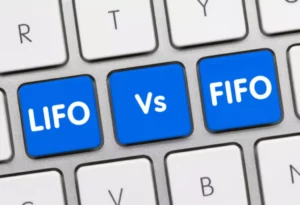Content

The amount is reported on the balance sheet in the asset section immediately below accounts receivable. A contra asset is a negative asset account that offsets the asset account with which it is paired. The purpose of a contra asset account is to store a reserve that reduces the balance in the paired account. By stating this information separately in a contra asset account, a user of financial information can see the extent to which a paired asset should be reduced.

A contra account is a general ledger account with a balance that is the opposite of another, related account that it is paired with. Get instant access to lessons taught by experienced private equity pros and bulge bracket investment bankers including financial statement modeling, DCF, M&A, LBO, Comps and Excel Modeling. This account serves two purposes — tracking total depreciation expenses while providing you with the accurate book value of the asset being depreciated. The accounting entries for a discount on notes receivables are as follows. Companies that hold inventories for a long time may face accumulating obsolete inventory. Whether reported as separate lines on the financial report or as a cumulative value, the net amount of the pair of accounts is called the “net book value” of the individual asset.
Contra asset definition
Conta revenue account examples include sales returns, sales allowance, and discounts. The amount in the accumulated depreciation account is deducted from the assets of a company, such as buildings, vehicles and equipment. This can help anyone viewing the financial information to find the historical cost of the asset. The accumulated depreciation amount shows how much depreciation expense has been charged against an asset.

However, that $1.4 billion is used to reduce the balance of gross accounts receivable. Therefore, contra accounts, though they represent a positive amount, are used to net reduce a gross amount. For this reason, contra accounts are primarily seen as having negative https://www.bookstime.com/articles/contra-asset-account balances because they are used to reduce the balance of another account. Sale on account, which can also be known as a sale on credit or credit sales, refers to when businesses give a product over to a customer and customers do not have to pay until later.
Do Contra Accounts Have Debit or Credit Balances?
The allowance for doubtful accounts, for example, is zero if the company collects all of its open customer receivables or the allowance amounts were written off as a bad debt expense. Accumulated depreciation contra accounts have a balance so long as the company owns the related asset. When a company sells the asset — usually a long-term asset such as a building or vehicle — the closing entry removes the related accumulated depreciation in the contra asset account. Therefore, these accounts will have no balance to net against an asset account or report through disclosures. In financial accounting, a contra asset account always relates to an asset account.
Accounts receivable result in a cash inflow to an organization when they repay their dues. They are the current assets of a company expected to be realized within 12 months. Bills payable or notes payable is a liability that is created when a company borrows any specific amount of money. If the company repays the loan early, the lender may provide a discount. This discount is subtracted from the total amount borrowed to better reflect the discount given by the lender.
Contra asset accounts journal entries
For stakeholders, looking at both accounts is also crucial in their decision-making process. Consider what would happen if you have sales on credit that you reasonably expect will not be paid. In the example of Homes Inc. the percentage of customers defaulting on the account, and the amount defaulted, is estimable and probable.
- Any company that owns intangible assets such as software, patent, etc., will maintain an accumulated amortization account.
- Contra accounts provide more detail to accounting figures and improve transparency in financial reporting.
- The corresponding effect is charged to accumulated depreciation accounts.
- Contra asset accounts can be used in a variety of areas, but there are three contra asset examples that you should pay close attention to.
- The balance in the allowance for doubtful accounts is used to find out the dollar value of the current accounts receivable balance that is deemed uncollectible.
- It usually nets off against related accounts and provides an opposite effect to the balance.
- For the purpose of financial statement reporting, the amount on a contra account is subtracted from its parent account gross balance to present the net balance.
When reporting a contra account in a company’s financial statement, it is reported immediately below the account it relates to or corresponds. Contra accounts have different names depending on the account they correspond. For instance, a contra account that relates to an accounts receivable is called a contra asset account. The outstanding balance of a contra asset account represents a credit figure. These accounts are maintained individually and are adjusted from the corresponding asset’s balance to show the net amount of the assets in financial statements. Examples of contra accounts include allowance for doubtful accounts, reserve for obsolete inventory, and accrued liabilities.
In case a customer returns a product, the company will record the financial activity under the sales return account. To oppose the revenue made by a company, contra revenue accounts must have a debit balance. Companies may use a financial statement disclosure to identify and describe the use of a contra asset account. For example, the allowance for doubtful accounts indicates money owed from customers a company does not expect to receive. There can be multiple reasons why the company does not expect to receive this owed money. Most financial disclosures dictate the amount expected to be lost, how the company came up with the figure, and any financial impact this lost capital will have on the business.
They are used in case some customers won’t be able to pay the money they owe to the business. Including contra revenue accounts is important in the income statement because it shows the original amount of sales the firm has made, along with any factor that has reduced that amount. Note that in accounting, the term “book value” is also used interchangeably with net value. Inventory obsolescence is an expense account, while the allowance for obsolete inventory is a contra asset account, which aims to reduce the inventory valuation on your balance sheet. Your bank account, the inventory you currently stock, the equipment you purchase, and your accounts receivable balance are all considered asset accounts.
Including contra accounts on a balance sheet is important as it allows for a more transparent view of a company’s financial position. This is done by separating the decreases that have occurred in the contra account from the original transaction amount. This allows the reader to see both the current and historical book values for a particular asset or liability. Contra liability accounts such as discount on bonds payable and discount on notes payable usually carry debit balances. In response, the firm should decrease its accounts receivable and revenue balances.
